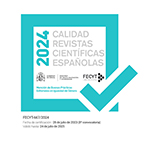Brecha digital educativa. Cuando el territorio es importante
Resumen
La Organización para la Cooperación y el Desarrollo Económicos (OCDE) define la brecha digital como “la distancia existente entre individuos, áreas residenciales, áreas de negocios y geográficas en los diferentes niveles socio-económicos en relación a sus oportunidades para acceder a las nuevas tecnologías de la información y la comunicación, así como al uso de Internet, lo que acaba reflejando diferencias tanto entre países como dentro de los mismos” (OECD, 2001).
La Comisión Europea indica que “la brecha digital es la distancia que separa a personas, empresas y territorios en cuanto a oportunidades de acceder a las TIC y utilizarlas” (Comisión Europea, 2006).
La brecha digital es, ante todo, expresión de la desigualdad en el uso y acceso de las nuevas Tecnologías de la Información y la Comunicación (TIC), y como desigualdad es generadora de procesos de exclusión social. Las causas que acompañan a su aparición son múltiples, desde la falta de las competencias y destrezas necesarias para el uso de las TIC, hasta la imposibilidad de acceder a los recursos electrónicos y de conexión necesarios, debido a bajos umbrales de renta. Podemos hablar de “Brechas digitales”, debido a que se configuran como procesos multidimensionales que incluyen barreras de diferentes tipos (Cabero 2004).
Descargas
Descarga artículo
Licencia
La revista Sociedad e Infancias, para fomentar el intercambio global del conocimiento, facilita el acceso sin restricciones a sus contenidos desde el momento de su publicación en la presente edición electrónica, y por eso es una revista de acceso abierto. Los originales publicados en esta revista son propiedad de la Universidad Complutense de Madrid y es obligatorio citar su procedencia en cualquier reproducción total o parcial. Todos los contenidos se distribuyen bajo una licencia de uso y distribución Creative Commons Reconocimiento 4.0 (CC BY 4.0). Esta circunstancia ha de hacerse constar expresamente de esta forma cuando sea necesario. Puede consultar la versión informativa y el texto legal de la licencia.










